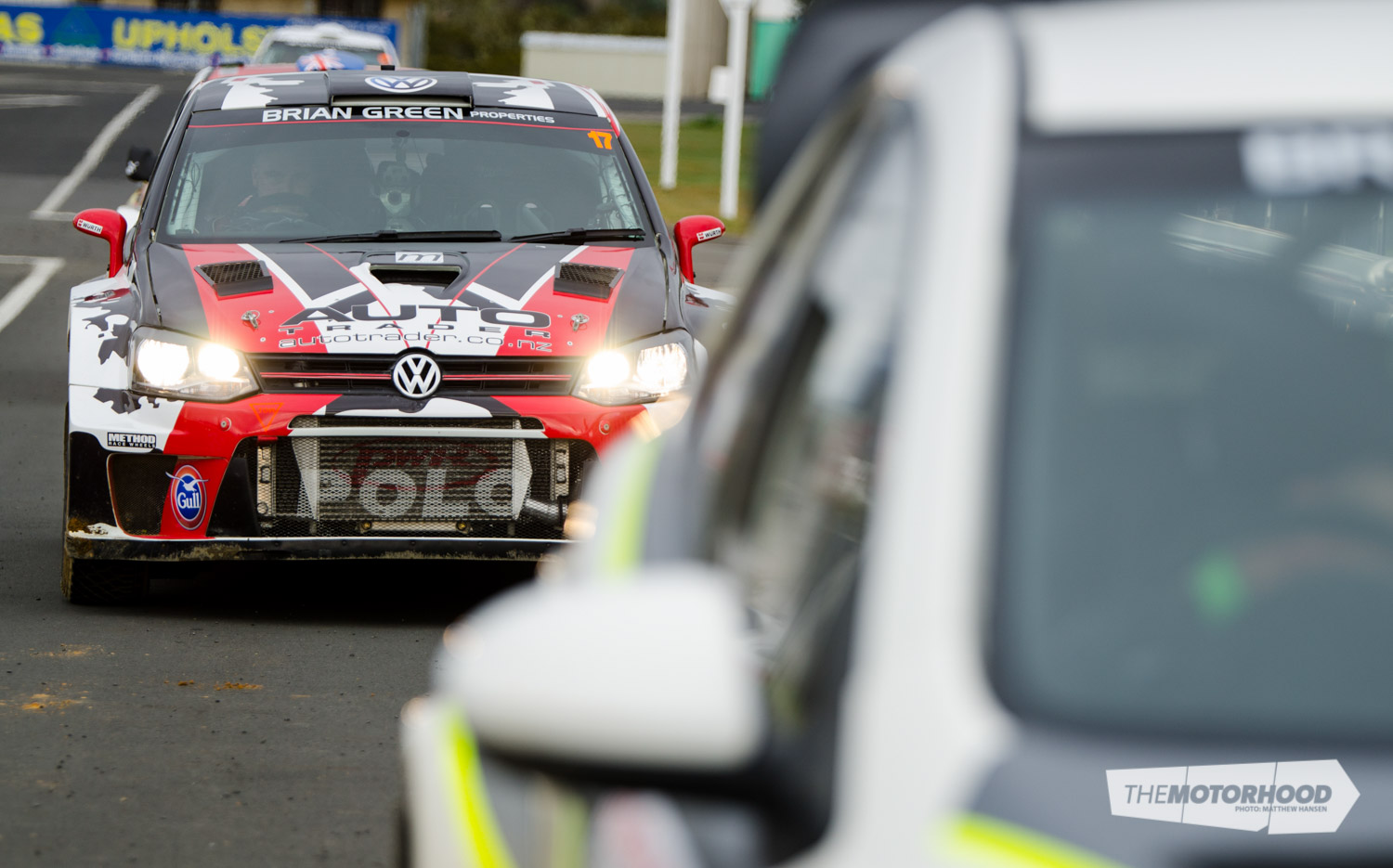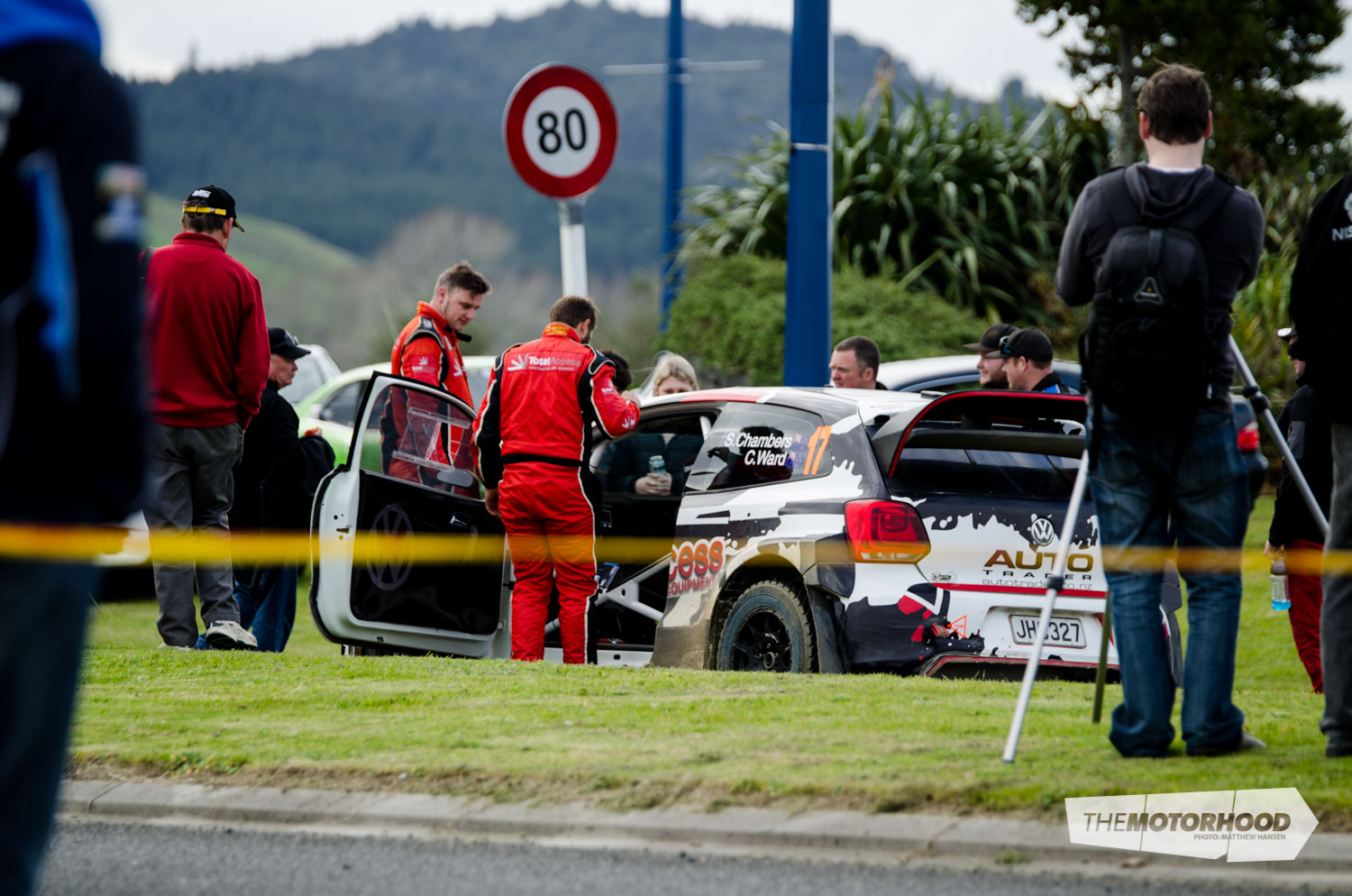Sometimes you just know that a particular car is going to destroy the internet — it’s a seventh sense a person develops after following car magazines, online blogs, and automotive Facebook pages for far too long a period of time.

That sense went off like cutlery in a microwave when I first saw Alex Kelsey’s brilliant home-built ‘Mad Creations 2’ (MC2) rally car, a car that NZ Performance Car magazine featured in Issue No. 212). Combining a tubular space-frame chassis, a shrill Formula Renault 3.5-litre engine, and packaging it all underneath an attractive carbon-fibre Peugeot 207 body, Kelsey’s work has done wonderful things for the sport.
With such a pornographic combination of elements at play, it came as no surprise when mainstream media all over the world picked up the story about the ‘kid’ from Coromandel who had built his own motorsport masterpiece. The subsequent coverage helped shine an almighty spotlight upon the New Zealand Rally Championship (NZRC), attracting attention from all corners of the country, and recruiting many racing fans nationwide — including myself.

But the MC2, like the rest of the world’s beautiful creatures, comes with a caveat. While the build didn’t necessarily break the bank, it did require all sorts of specialized machinery and genius to come true — the kind of machinery and genius that you can’t just buy from Kmart or learn from a book. The MC2 is a one-in-a-million kind of race car, in a world where struggling rally championships — including our own — are in need of a platform that’s a bit more practical, while still capable of capturing people’s imagination.

Enter Shannon Chambers and his Volkswagen Polo R, which, just like the Holden Cruze we featured last week, isn’t just a car your mum might own with a wing hot-glued to the hatch.

The project was led by Mark Pilcher from M2 Competition, the team behind young Canadian Lance Stroll and his successful 2015 Toyota Racing Series championship victory. Underneath its pretty World Rally Championship–lookalike exterior lies a purpose-built chassis and bodyshell imported from Poland, mated to componentry and running gear from a Mitsubishi Evo X — both elements designed to make the car reliable and affordable, as well as quick enough to challenge the established firm. Crucially, the major components were ones which could be considered as proven, as opposed to the fresh engineering we’ve seen in other recent additions to the NZRC. The Polo is one of two built by the M2 outfit, with the second intended for road-rally usage in events like Targa New Zealand.

Testing for the car proved frustrating, hardly anything new for those venturing into new territory. A scheduled three-day test in the Maramarua forest for the Volkswagen was shortened due to technical dramas, and even after testing had taken place, it was difficult for Chambers to gauge how quick the car was. So approaching round five of the NZRC on August 22 for the Mahindra Goldrush Rally of Coromandel, where he and co-driver Campbell Ward were scheduled to debut the Polo, there was some uncertainty. “There’s been a lot of work done to get the car ready — way more than what we thought,” Chambers said at service. “We only just finished it properly last night.”

Seeded in 17th, the Polo was up against a swag of more established cars. It wasn’t long ago that the Mitsubishi Evo and Subaru Impreza WRX held a monopoly on Kiwi rallying. Perhaps this is coming to an end.
Camped on the outside of the fourth turn of stage one, it’s cold, damp, and dark. Not that any of the spectators give a damn — all of them exchanging banter and having a laugh between each passing car, with no real protection apart from their own wits. With 16th-seed Glen Inkster zipping past in his borrowed Mazda 2, the arrival of the Polo was imminent.

And sure enough, here it comes, as sideways as any other entrant before it. Looking convincing, Chambers pitches it into the sharp left-hander, coating all and sundry with dirt and stones, before driving off into the distance. While it looked and sounded good, a debrief with the driver in the service park following stage two revealed otherwise.

“We wanted to go into the first stage with a bit of an attack strategy, but we had no rear grip,” Chambers explained. “We changed the diff settings overnight, and we might’ve gone the wrong way — we had no confidence in the car. We put on a bit of a show for the crowd, but we didn’t get any time out of it.
“It was a little bit scary, but I don’t mind driving it like that, but you just don’t get any speed from it.”

After finishing 13th in the opening stage, the pair improved to be 11th quickest through stage two — setting a time 17-seconds shy of rally leader Ben Hunt in his Impreza WRX. “For the second stage, we changed the diff settings and I probably just wasn’t aggressive enough … We’d like to be a bit further up the order, but we’re up against pretty good competition.”
Stage four and the Polo vaulted up the order to an impressive seventh, after Chambers clocked the sixth-fastest time through the Castle Rock stage, just seven seconds adrift of the time set by Kelsey’s MC2. A remapping of the Polo’s diff had helped rectify the team’s handling issues from the morning. With half of the rally still to go, they looked on target for further improvement — maybe even a top five.

Further improvement in stage six — a repeat of stage four — resulted in Chambers trimming 10 seconds off his previous best, in an “unbelievable ride” where the Polo hit the 8000rpm rev limiter with every gear change. But as the car rolled up to the start line of stage seven, its rally was about to end.
Stage seven was a brief one-kilometre sprint through the streets of Whitianga, starting at the town’s local Countdown supermarket, whizzing down to the town roundabout, where the barricades were lined with spectators and curious locals, before a quick return back to the start line. But as Chambers readied himself and the Polo to lash out on Whitianga, he felt a snap. “I think it broke a rod or something and the engine has given up on the start line. I put it on launch control, so it was revving quite high, and when I let the clutch out it just snapped.”

The Polo was towed through the stage, and eventually parked just past the roundabout. It may not have claimed victory, but it did at least garner plenty of interest, with spectators all huddling around the car as the M2 team gave it a once-over. “Oh, we would’ve backed it in,” he laughs, after I ask how he would’ve taken the roundabout given the opportunity.

“It would’ve been good to finish, but we never expected the engine to have issues — the engine’s quite strong … it’s marginal on torque on the uphill sections, as we’re losing a lot of time there. But the rest of it’s awesome. Better than what we thought — better than what I thought. It handles real good, and it’s good under brakes. We’ve just got to try and keep it going for the whole rally next time.”

Retiring both figuratively and literally to a few cold beers, the crew looked proud of the little Volkswagen. And they should be. It was quick, solid, and, almost most importantly, capable of capturing the imagination of those who got to see it in action. I can’t wait to see it, and its evil 750hp Cosworth-powered road-rally twin, out in force again.

Keep your eyes peeled for a full feature of Shannon and M2 Competition’s Volkswagen Polo R in a future issue of NZ Performance Car magazine.









































